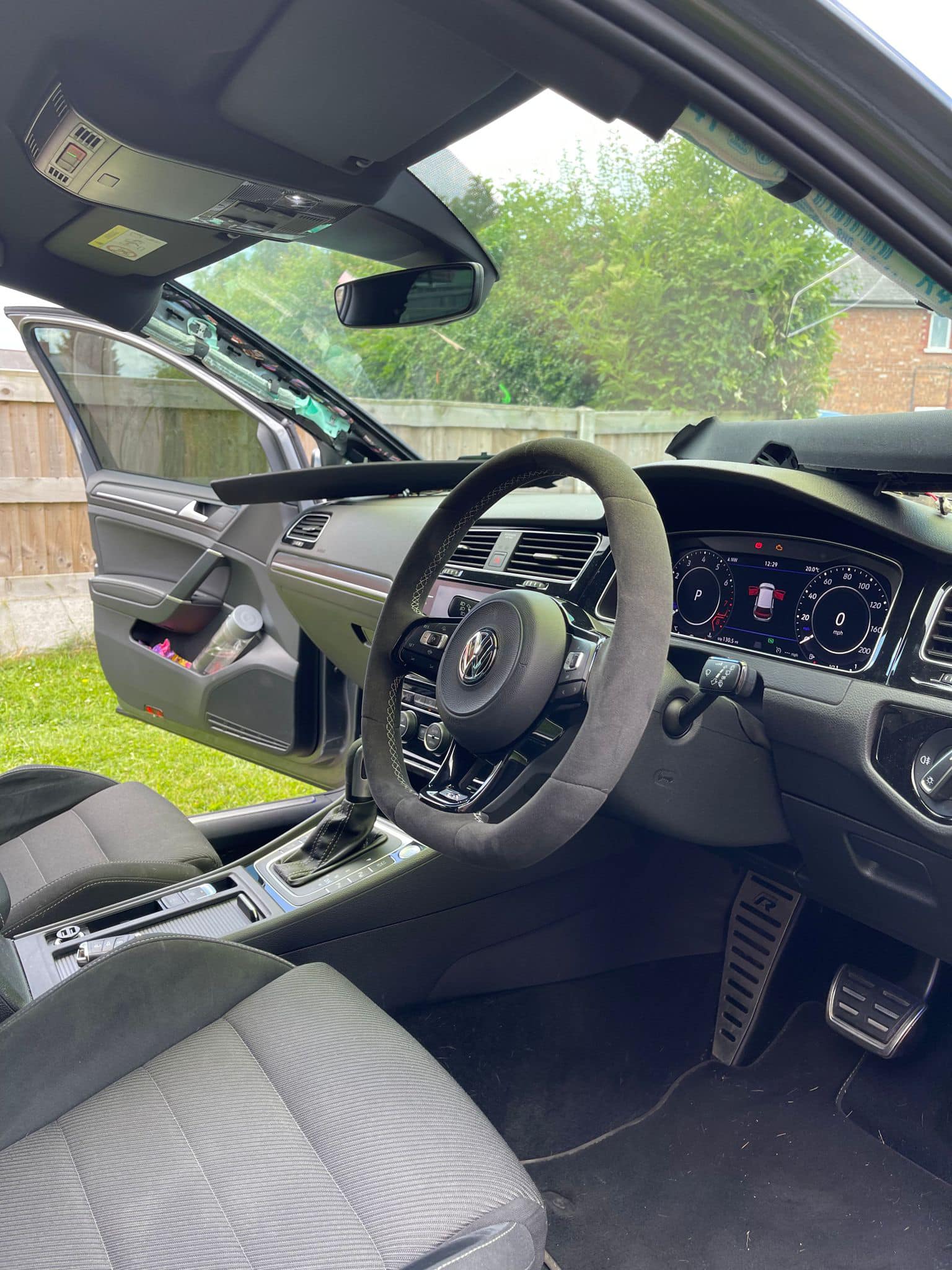A customer contacted me with a particular requirement to add the Dynaudio A pillars seen on the upgrade stereo option on the VW Golf 7/7.5. He had already purchased/sourced the Dynaudio A pillars complete with tweeter in grey headliner – in many respects, this is one of the hardest parts done already!


However, retrofitting these on their own as a stanadlone component to the stock stereo system presents a number of challenges for the following reasons:
- The clips holding the A pillars are designed as one time use/permanent fixture to ensure the airbag operates optimally without the A pillars coming loose in the event of airbag deployment. The metal used to secure the A pillars is incredibly hard and strong
- Dynaudio A pillar tweeters use a male connector, rather than the female connector seen on the factory D&M PSS tweeter – it’s almost as if VW predicted the enthusiasts would have a go at swapping the A pillars but didn’t want to be responsibile for any blown drivers considering there is no capacitor added – the consequences of this are explained on the next point
- The Dynaudio tweeter relies on the active crossover in the module 47/amplifier/DSP/digital sound package control unit as VW call it under the passenger seat (driver seat in other markets). This presents an issue when attempting to add them to the stock system, as you need to add a capacitor in the circuit (similar to the stock tweeter) to ensure the signal it receives paralleled from the door speaker does not contain any bass frequencies. If these are not filtered out, as some other VW enthusiasts have learnt the hard way – the drivers will blow and will not last long
Thankfully, where there is a will, there is a way. For this customer, I fabricated a special wiring loom which consisted of the VW group female wiring connector at both ends, with a 47 uF capacitor in circuit with the correct phasing on the positive line. This yields an 800Hz crossover frequency. Although this may sound low, this is the same as how it is configured on the “official” or “factory” Dynaudio sound system. The driver is quite large and very capable, particularly high quality so I suspect this is how Dynaudio/VW are getting away with this cut off frequency. It could also be a mitigation factor in case the 6.5″ door speakers cannot handle the midrange frequencies with low audible harmonic distortion.


There is an art to removing the A pillars, as outlined above, they are designed to be very strong and secure in case the airbags are deployed. One of the clips comes out freely, the other 2 have to be detached from the A pillar (flathead screwdriver or blunt kitchen knife is ideal for this task – just be mindful of the airbag, you really do not want to damage this). The strong 2 clips remain attached to the car chassis and the looser clip remains on the A pillar itself. Care must be taken when removing the strong clips that remain on the car chassis – the trick with this is to use a set of needle nose pliers and another set of pliers with a larger grip. Use the needle nose pliers to pull the clip as far forward as you can, and use the pliers with the bigger grip to squeeze the clip out from where it meets the metal chassis where it ridges up and down to form the secure clip.


Once the A pillars are removed, it is a case of ensuring all the clips are present on the new A pillars, inserting the bottom portion of the A pillar into where it meets the leather dash and far corner window, and pushing it into place – ensuring before doing so all the clips align with the holes in the chassis (a torch is useful for this to look through the gap). If everything lines up, they should clip into place and be extremely secure with no ridges – as pictured below, the finished product on this install – as if it came from factory.




The customers motive for this was to add the chrome trim to the A pillar and lift this element of the interior. Early on I highlighted there may be minimal audio improvement, with the possibility of it being degraded. The Dynaudio drivers typically have their own amp channel in a bi-wired setup and may have a different sensitivity to the stock speakers. However, the customer did notice a clear sound improvement.
On this basis, this could be a worthwhile upgrade to your car. Fully retrofitting the Dynaudio setup gets into the thousands easily when you consider component protection removal, wiring loom, door speaker replacement, sound deadening, boot subwoofer, external amplifier, MOST fibre optic feed etc. This may be enough for some.
Of course, it does not compare to the full Dynaudio setup with the full active crossover and external amp with Dynaudio drivers throughout the car complimented with the dual voice coil subwoofer – but we are comparing 2 very different systems here, an infotainment unit that puts out 4x 20W whilst juggling several other tasks, and a dedicated 10x 40W external amplifier. If it sounds good/offers an improvement to the aesthetics and some audible improvement, that’s all that matters.
